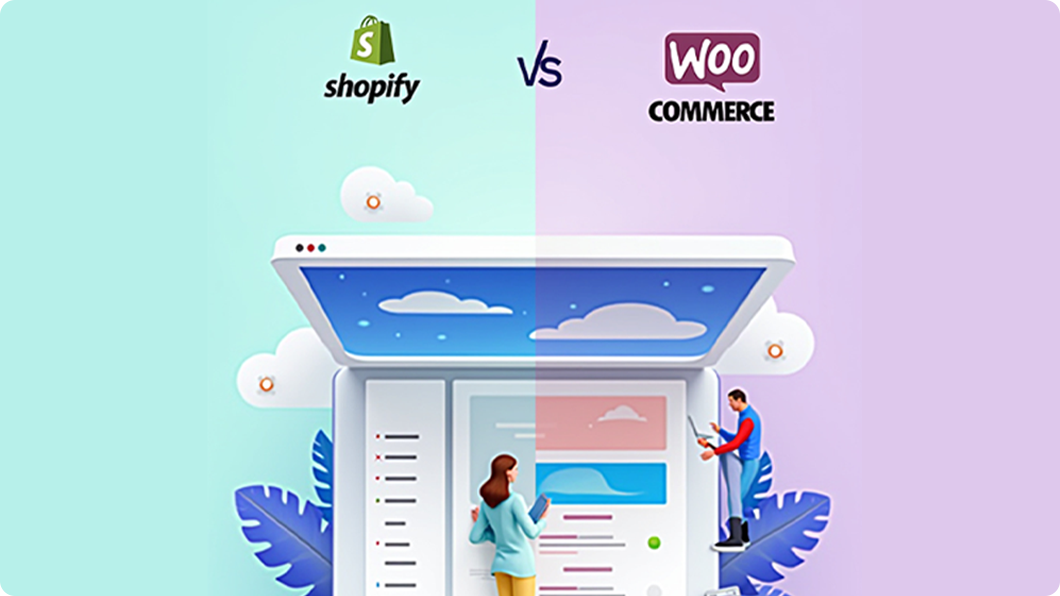
The Evolution of Cloud Computing: From Mainframes to Server less Architecture
Introduction
In the fast-paced world of information technology, few innovations have been as transformative as cloud computing. Over the years, we’ve witnessed a remarkable evolution in the way we store, manage, and access data. From the days of clunky mainframes to the cutting-edge serverless architecture, this blog post delves into the fascinating journey of cloud computing and its impact on the IT landscape.
The Birth of Cloud Computing:
- In the beginning, IT infrastructure was primarily based on mainframes and on-premises servers.
- The limitations of these systems led to the birth of cloud computing, offering scalable and flexible resources.
Rise of Virtualization:
- Virtualization technologies allowed for better resource utilization and server consolidation.
- Virtual machines (VMs) became a popular way to run multiple operating systems on a single physical server.
The Era of Infrastructure as a Service (IaaS):

- IaaS providers like Amazon Web Services (AWS) and Microsoft Azure made it easier for businesses to outsource their infrastructure needs.
- Companies could now scale resources up and down as needed, reducing capital expenses.
Platform as a Service (PaaS):
- PaaS offerings, such as Google App Engine and Heroku, simplified application development and deployment.
- Developers could focus on writing code without worrying about server management.
Containers and Docker:
- Containers introduced a new level of portability and efficiency for application deployment.
- Docker containerization technology revolutionized the way we package and run applications.
Serverless Computing:
- Serverless architecture allows developers to build and run applications without managing servers.
- Services like AWS Lambda and Azure Functions automatically handle scaling and resource allocation.
The Role of Microservices:

- Microservices architecture emerged as a way to create complex applications composed of smaller, independent services.
- This approach enhanced agility and allowed for more efficient development and maintenance.
The Impact on DevOps:
- Cloud computing and the adoption of DevOps practices became inseparable.
- Automation and continuous integration/continuous deployment (CI/CD) pipelines accelerated software delivery.
Future Trends in Cloud Computing:
- Edge computing, quantum computing, and increased security measures are shaping the future of cloud technology.
- The hybrid and multi-cloud environments are gaining popularity for their flexibility and redundancy.
The evolution of cloud computing from mainframes to serverless architecture represents a remarkable journey, driven by the need for scalability, flexibility, and efficiency in IT operations. As we look ahead, cloud technology will continue to shape the IT landscape, bringing new possibilities and challenges. Staying current with these developments is crucial for businesses and IT professionals alike as they navigate this dynamic and ever-changing field.
FAQs
Q1: What is cloud computing, and how does it differ from traditional on-premises IT infrastructure?
Cloud computing is a technology that allows users to access and utilize computing resources (such as servers, storage, databases, networking, software, and more) over the internet. Unlike traditional on-premises IT infrastructure, cloud computing eliminates the need to own and manage physical hardware, enabling businesses to scale resources as needed and pay only for what they use.
Q2: What were the key driving factors behind the adoption of cloud computing?
Several factors contributed to the adoption of cloud computing, including cost savings, scalability, flexibility, disaster recovery, and the ability to focus on core business activities without the burden of managing hardware and infrastructure.
Q3: How did virtualization change the landscape of IT infrastructure?
Virtualization technology allowed multiple virtual machines (VMs) to run on a single physical server, optimizing resource utilization. This was a significant shift from the traditional one-application-per-server model, leading to better efficiency and cost savings.
Q4: What is Infrastructure as a Service (IaaS), and how does it fit into the cloud computing model?
IaaS is a cloud service that provides virtualized computing resources over the internet. It includes services like virtual machines, storage, and networking, allowing businesses to build, manage, and scale their infrastructure without investing in physical hardware.
Q5: How does Platform as a Service (PaaS) simplify application development?
PaaS provides a platform for developers to build, deploy, and manage applications without worrying about underlying infrastructure. It offers tools and services for coding, testing, and deploying applications, making the development process more efficient.
Q6: What is serverless architecture, and how does it differ from traditional server-based models?
Serverless architecture, also known as Function as a Service (FaaS), allows developers to write and run code without managing servers. It automatically handles server provisioning, scaling, and resource allocation, making it ideal for event-driven and microservices applications.
Q7: How do containers, like Docker, fit into the cloud computing landscape?
Containers provide a lightweight and portable way to package applications and their dependencies. Docker, in particular, popularized containerization technology, making it easier to deploy and manage applications consistently across different environments.
Q8: What role do microservices play in cloud-based applications?
Microservices architecture breaks down complex applications into smaller, independently deployable services. This approach enhances scalability, agility, and ease of maintenance, enabling rapid development and updates.
Q9: How has cloud computing impacted the field of DevOps?
Cloud computing and DevOps go hand in hand. Cloud technology has enabled automation, continuous integration, and continuous deployment (CI/CD) pipelines, allowing for faster and more reliable software development and deployment.
Q10: What are some future trends in cloud computing to watch for?
Future trends in cloud computing include edge computing (processing data closer to the source), quantum computing (for complex calculations), increased security measures, and the growth of hybrid and multi-cloud environments, providing businesses with more options for flexibility and redundancy.
Q11: Is it safe to store sensitive data in the cloud?
Cloud service providers invest heavily in security measures. However, the safety of sensitive data in the cloud depends on proper configuration, encryption, and access control. It’s essential for businesses to implement security best practices and compliance measures to protect their data.
Q12: How can businesses choose the right cloud service provider for their needs?
Businesses should consider factors like their specific requirements, budget, performance needs, and geographic presence when choosing a cloud service provider. It’s often a good idea to assess different providers and their services before making a decision.
Q13: What are the cost implications of moving to the cloud?
The cost of cloud computing varies depending on usage. While it can offer cost savings through pay-as-you-go models, businesses should monitor their usage and optimize resource allocation to control costs effectively.
Q14: How can businesses ensure data continuity and disaster recovery in the cloud?
Cloud providers often offer data redundancy and disaster recovery services. Businesses should create data backup and recovery strategies tailored to their needs and regularly test these plans to ensure data continuity.
Q15: Can small businesses benefit from cloud computing, or is it primarily for larger enterprises?
Cloud computing is accessible to businesses of all sizes. Small businesses can benefit from cost-effective solutions and scalable resources, just as larger enterprises do.





